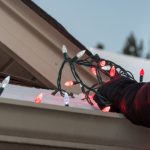Brightening Up the Holidays: LED Lights vs. Incandescent Lights for Festive Decorations
 With the holiday season just around the corner, it’s time to start thinking about how to decorate your home to create a magical atmosphere. One of the most popular choices for holiday decorations is lighting, as it brings a festive glow to any space. When it comes to lights, you have two main options: LED lights and incandescent lights. In this blog post, we will explore the pros and cons of each, helping you decide which option is best for brightening up your holidays.
With the holiday season just around the corner, it’s time to start thinking about how to decorate your home to create a magical atmosphere. One of the most popular choices for holiday decorations is lighting, as it brings a festive glow to any space. When it comes to lights, you have two main options: LED lights and incandescent lights. In this blog post, we will explore the pros and cons of each, helping you decide which option is best for brightening up your holidays.
1. Energy Efficiency:
LED lights are renowned for their energy efficiency. They use up to 75% less energy than incandescent lights, which means significant savings on your electricity bill. This is especially important during the holiday season when electricity usage tends to spike. On the other hand, incandescent lights are known for their high energy consumption, as they convert most of the energy into heat rather than light. If you want to make your holiday decorations more environmentally friendly and cost-effective, LED lights are the way to go.
2. Lifespan:
Another significant advantage of LED lights is their exceptional lifespan. While incandescent lights typically last for around 1,000 hours, LED lights can last up to 25,000 hours or more. This means that LED lights can be reused for several holiday seasons, providing you with long-term value for your investment. Incandescent lights, on the other hand, not only have a shorter lifespan but also tend to burn out more frequently, requiring more frequent replacements.
3. Safety:
Safety should be a top priority when decorating your home for the holidays. LED lights have a cool operation, as they generate very little heat. This significantly reduces the risk of them causing a fire or overheating, making them a safer option, especially if you have young children or pets. In contrast, incandescent lights get extremely hot and can pose a fire hazard if they come into contact with flammable materials or if they are left unattended for long periods of time.
4. Durability:
Holiday decorations often need to withstand harsh weather conditions, especially if you have outdoor displays. LED lights are highly durable and can withstand freezing temperatures, rain, and even snow. They are more resistant to breakage and damage compared to delicate incandescent bulbs, making them ideal for outdoor use. Incandescent lights, however, are more prone to breakage and are not as sturdy, making them better suited for indoor decorations.
5. Light Quality:
When it comes to the quality of light, opinions may vary depending on personal preferences. Incandescent lights provide a warm, traditional glow that many people associate with the holiday season. However, LED lights have come a long way and now offer a variety of colors, including warm white options that mimic the traditional incandescent light. Additionally, LED lights are available in different shapes and sizes, giving you more flexibility when creating your desired holiday ambiance.
6. Cost:
Initially, LED lights may seem more expensive than incandescent lights. However, considering their energy efficiency and longer lifespan, LED lights are a cost-effective option in the long run. While incandescent lights may come at a lower upfront cost, the frequent replacements and higher energy usage quickly add up. Additionally, LED lights have become more affordable in recent years, making them a viable choice for any budget.
Conclusion
Both LED lights and incandescent lights have their advantages and disadvantages when it comes to holiday decorations. LED lights are energy-efficient, have a longer lifespan, provide better safety, and are more durable. On the other hand, incandescent lights offer a traditional warm glow and are often more affordable upfront. Ultimately, the choice will depend on your priorities, budget, and personal preferences. Whichever option you choose, may your holiday decorations sparkle and bring joy to all those who see them!
Got Questions? Let Us Help!
More...
Categorised in: Electrical Tips




